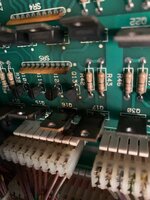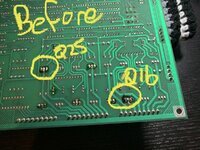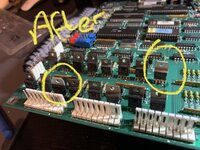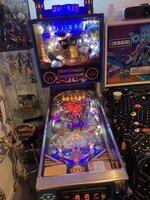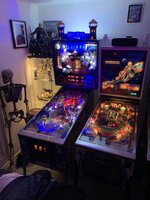A sited machine wouldn't be usable without the feeder working, but at home Jonathan could play it with the door open, operating the feeder manually. It's not as if this is a Dr. Who, or Johnny Moronic, which don't take kindly to having the door open, or that there's a courtesy switch for solenoid power.
A check of the feeder solenoid is wise, though. If it looks damaged, or shows a much lower resistance than a similar coil (23-800) then it will just repeat the whole thing again. If Q 25 was indeed shorted, the chances are that locking on the coil has overheated it, melting the lacquer insulation of the winding and short-circuiting it. Hence F2A blowing very quickly in post No.31, above.
There are also 'tie-back' diodes on all coil circuits, to prevent damage to driver (and other) components from solenoid pulses. They used to be attached to the coils themselves (they still are, for flipper coils), but Jokerz has all the others on the Aux Power board. A bit of sensibility has them numbered to tally with the solenoid drive, mostly anyway. The one for Solenoid 2 is D 2, and for Solenoid 11 it's D 11. These aren't the large diodes used for the A/C network, but smaller 1N 4003 devices. Shorted, they'd blow the fuse in their own right (if not worse, see a recent topic about a Robocop), but if one's open-circuit it wouldn't give any protection and by default could cause strange problems. A diode only conducts in one direction, towards the banded (-ve) end.
Looking at the picture of Q 16 and its surroundings, the circuit board does look a little warmed. The connecting header seems to be charred, too. That little group of Q 10 to 13 and Q 14 to 17 are four drive circuits, the smaller transistors switch the larger ones, which then conduct current and operate whatever's connected. The small transistors can also get damaged in cases like this, Q 12 here. The flat brown component SR 5 is a handy strip of miniature resistors, used to ensure the large transistor switches Off when not in use by connecting its controlling 'base' terminal to ground, Pin 1 of the strip, with the white dot marking.

